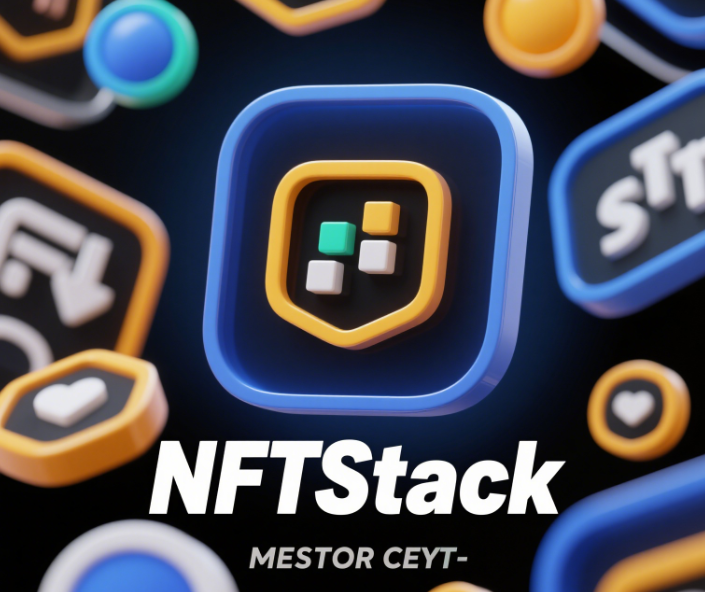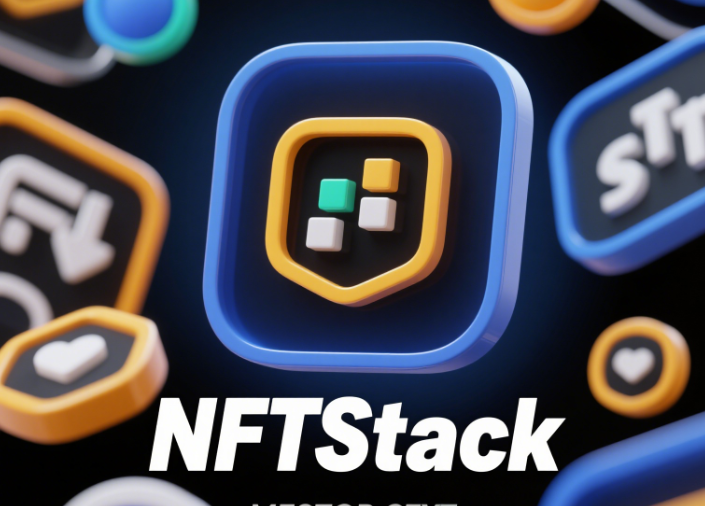In the dynamic world of blockchain, NFT staking has emerged as a game-changing strategy, allowing holders to transform static digital assets into revenue-generating tools. By locking NFTs into smart contracts, users earn rewards while supporting decentralized ecosystems. This comprehensive guide explores the mechanics, benefits, risks, and future of NFT staking, tailored for investors and enthusiasts seeking to maximize their crypto portfolio.
What Is NFT Staking?
NFT staking involves depositing non-fungible tokens into protocols or platforms to participate in network activities, such as validating transactions, securing the blockchain, or contributing to governance. Unlike traditional crypto staking, which focuses on fungible tokens (e.g., ETH, SOL), NFT staking leverages the uniqueness of digital assets to create specialized rewards. For example, staking an NFT in a metaverse project might grant access to exclusive virtual lands or in-game items .
Key protocols like Axie Infinity, Decentraland, and Aavegotchi have popularized NFT staking by offering APY (Annual Percentage Yield) ranging from 5% to 30% . These platforms use NFTs as collateral or governance tools, incentivizing long-term holding and community engagement.
How Does NFT Staking Work?
The process typically involves three steps:
- Select a Platform: Choose a reputable NFT staking platform aligned with your goals (e.g., gaming, art, DeFi).
- Deposit NFTs: Lock your NFTs into the platform’s smart contract. Some platforms require specific NFTs (e.g., Axie Infinity’s Axies), while others accept a broader range.
- Earn Rewards: Receive tokens, utility benefits, or governance rights based on the platform’s rules. Rewards may be distributed daily, weekly, or monthly.
For instance, Lucky Block allows users to stake NFTs for up to 12 weeks, earning rewards in its native token, LBLOCK . Similarly, Quint offers real-world perks like luxury hotel stays and supercar experiences as staking rewards .
Benefits of NFT Staking
1. Passive Income Generation
NFT staking provides a steady stream of income without selling assets. For example, staking 蓝筹 NFTs like CryptoPunks or BAYC in DeFi protocols can yield high APY while preserving the asset’s value .
2. Enhanced Utility
Staked NFTs often unlock exclusive features. In The Sandbox, staking LAND NFTs grants access to virtual events and gaming tournaments . Similarly, Aavegotchi’s GHST tokens allow users to mint rare digital collectibles.
3. Governance Power
Many platforms reward stakers with governance tokens, enabling them to vote on protocol upgrades. For example, staking UNI tokens on Uniswap grants voting rights on liquidity pool decisions.
4. Risk Mitigation
Staking reduces exposure to market volatility by incentivizing long-term holding. While prices may fluctuate, staking rewards provide a buffer against short-term downturns .

Risks and Challenges
1. Smart Contract Vulnerabilities
Flaws in smart contracts can lead to hacks or fund losses. In 2024, the Onyx protocol suffered a security breach when a malicious actor exploited an NFT liquidation contract, draining VUSD tokens . Always verify audits by firms like CertiK or OpenZeppelin.
2. Market Volatility
NFT prices are highly volatile. A sudden drop in an NFT’s value could offset staking rewards. Diversifying your portfolio and choosing stable projects (e.g., Decentraland) can mitigate this risk .
3. Liquidity Constraints
Most platforms impose lock-up periods (e.g., 30–90 days), limiting access to funds. If prices plummet during this period, users cannot sell or unstake immediately .
4. Regulatory Uncertainty
NFTs face evolving regulations. The U.S. SEC has scrutinized projects for potential securities violations, creating compliance challenges for staking platforms .
How to Get Started with NFT Staking
- Choose the Right NFTs: Focus on high-demand projects with proven utility (e.g., Axie Infinity, Mutant Cats).
- Research Platforms: Compare APY, lock-up terms, and security measures. Top platforms in 2025 include Lucky Block, Quint, and Mutant Cats .
- Secure Your Wallet: Use hardware wallets like Ledger or Trezor to protect your NFTs from hacks.
- Monitor Performance: Track rewards and market trends using tools like Zapper or DeBank .
Future Trends in NFT Staking
1. Institutional Adoption
Institutions are increasingly exploring NFT staking for diversified portfolios. Platforms like Keynode offer institutional-grade staking services with high APY and instant withdrawals .
2. AI-Driven Optimization
AI algorithms are being developed to predict staking rewards and identify undervalued NFTs. Projects like Virtuals use AI to optimize staking strategies .
3. Cross-Chain Integration
Interoperability protocols (e.g., Polkadot, Cosmos) enable NFTs to be staked across multiple blockchains, expanding reward opportunities .
4. Real-World Asset Tokenization
NFTs are bridging the gap between digital and physical assets. For example, staking real estate NFTs could generate rental income .
Conclusion
NFT staking is revolutionizing how we interact with digital assets, offering passive income, governance rights, and utility in decentralized ecosystems. While risks like smart contract vulnerabilities and market volatility persist, careful research and diversification can unlock significant rewards.
Bitora is your go-to platform for real-time NFT staking insights, market analysis, and security updates. Stay ahead of trends with our expert guides and portfolio tracking tools. Visit Bitora today to elevate your NFT staking journey.
Bitora: Empowering Your Crypto Success with Data-Driven Insights









Leave A Reply